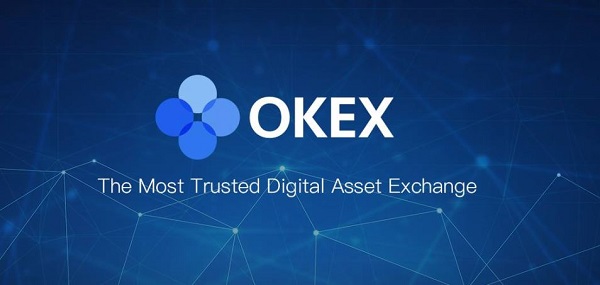
Our weekly roundup of news from East Asia curates the industry’s most important developments.
OKX airdrop after token trading fiasco
On Mar. 1, cryptocurrency exchange OKX announced that it would airdrop 3,014,381 Tether (USDT) to users who suffered losses as a result of the Celestial (CELT) token trading incident. On Feb. 26, Celestial revealed the development of a novel blockchain game, followed by extensive social media campaigns promoting the project’s alleged backing by OKX. Shortly afterward, the price of CELT pumped nearly 100% in two days before plummeting over 60%, after OKX clarified it had no affiliation with the project other than a $100,000 investment from OKX Ventures in Nov. 2021.
“On Feb. 27, many influencers on social media promoted the [CELT] project by claiming that it was the “Son of OKX,” such actions were not authorized by the OKX exchange.”
After an investigation, OKX concluded that there was evidence of “malicious market manipulation” associated with the incident. The exchange explained shortly afterward that it froze 714,381 USDT held in five accounts suspected of market manipulation, and clawed back 1.3 million USDT from Celestial developers.
Combined with 1 million USDT of its own money, OKX will airdrop a total of 3 million USDT to users who purchased CELT between Feb. 25, 12:00 pm Hong Kong time (HKT), and Feb. 28, 12:00 pm HKT and suffered losses. The airdrop will be delivered to affected users within the next 48 hours.
Although experts disagree on its supposed transparency, OKX has also decided to double down on its proof-of-reserves (PoR) model. On Mar. 2, the exchange stated that its upcoming PoR report would “enhance transparency by allowing anyone to download the full liability Merkle tree,” and that users can “verify all client deposits are accounted for” and claims it “guarantees solvency by comparing net equity,” via novel zero-proof methods.
In its most recent update, OKX claimed that it held $8.6 billion worth of Bitcoin, Ether, and Tether on the exchange. OKX’s next monthly PoR publication will take place on or around March 20.
Read also
Crypto Twitter Hall of Flame
Crypto Mason’s death threats from maxis: Hall of Flame
Features
Saving the planet could be blockchain’s killer app
Binance and AI NFTs
On March 1, cryptocurrency exchange Binance launched a novel AI product dubbed “Bicasso.” Binance CEO Changpeng Zhao (CZ), said you “can turn your creative visions into NFTs with AI” by uploading an image with a limit of 50MB and a description of the uploaded picture.
There is currently a waitlist as AI NFT minting was limited to a maximum of 10,000 collectibles. CZ has apparently taken an interest in exploring AI after popular chatbot ChatGPT reached 100 million users just two months after its launch.

FTX Japan nearly completes withdrawals
In the latest update published on Feb. 28, FTX Japan, the Japanese subsidiary of bankrupt cryptocurrency exchange FTX, revealed that users had almost withdrawn all of their assets since withdrawals reopened on Feb. 21. According to FTX Japan, the exchange had 80 Ethereum and 28.48 Bitcoin left unclaimed, worth $793,000 at the time of publication, among other residual assets.
Previously, FTX had disclosed that it held 6.672 billion Japanese Yen ($48.83 million) in users’ assets before regulators halted exchange in Nov. 2022 as part of international bankruptcy proceedings. As Japanese law required exchanges to segregate clients’ assets from that of its own, many users reported being able to withdraw their FTX Japan balance in full, albeit first transferring their account to Liquid Japan, a related entity.
“We would like to sincerely apologize for causing great concern to our customers in connection with the bankruptcy of our parent company, FTX Trading Limited. We have resumed withdrawal and withdrawal services from Liquid Japan from Feb. 21, but services related to normal transactions have been suspended. Thank you for your understanding.”
Read also
Features
What it’s like when the banks collapse: Iceland 2008 firsthand
Features
Inside South Korea’s wild plan to dominate the metaverse
Russia and China’s blockchain friendship
The Credit Bank of Moscow (MCB) has issued the first blockchain letter of credit for Chinese Yuan exceeding 100,000,000 CNY.
In international commerce, sellers in one country typically ship purchased goods to buyers in another country and present a letter of credit to the intermediary bank for payment. According to the bank, “the advantage of a digital bank guarantee is that the beneficiary does not need to wait for the paper version and make a separate request to the bank to confirm the authenticity of the issued document.”
The letter of credit is minted on MCB’s Masterchain blockchain network and is displayed to all three parties of international commerce and it cannot be altered or falsified.
“This is the first digital letter of credit in the market which was issued in yuan, through the Masterchain system,” said Natalya Bahova, director of the international and structured finance department at MCB. “Most foreign trade contracts are serviced in Chinese currency, and the demand for payments in yuan is only growing.
The decision will be especially relevant for large groups of companies that have many subsidiaries that accept letters of credits in large quantities and on a regular basis.
BitFlyer CEO wants to reinstate himself
According to a Bloomberg report on Feb. 26, Yuzo Kano, co-founder of Japan’s largest cryptocurrency exchange BitFlyer Holdings, wants to return as CEO and take the company public. Kano, who owns 40% of BitFlyer, stepped down in 2019 after the exchange was ordered to adopt stronger anti-money-laundering measures. Since then, the exchange has been embroiled in a drama culminating in a proposed sale to Singaporean fund ACA Partners in 2022, which Kano derailed.
The blockchain executive alleges that ACA and current management worked together to sell the exchange on the cheap, which is why he quashed the sale. BitFlyer currently has three million accounts and handles more Bitcoin transactions than any other exchange in Japan. If he returns, Kano aims to introduce stablecoins, build a token-issuance operation, and potentially open up its Miyabi blockchain technology to the public. He plans to bring forth a reinstatement proposal at a shareholders’ meeting next month.

Voyager’s 1 hour due diligence on 3AC
According to bankruptcy court documents published on Feb. 28, now-broke cryptocurrency broker Voyager Digital barely verified the now-also-broke Three Arrows Capital’s operations and financial standing before extending it a line of credit in early 2022. The Mr Brosnahan mentioned is the Chief Commercial Officer of Voyager and Mr Whooley is Voyager’s Treasury director:
“On February 28, 2022, the first and only diligence call was held between Voyager and 3AC. Mr. Brosnahan recollected that call lasting 30 minutes, while Mr. Whooley recollected it lasted an hour.”
Executives who attended the call said 3AC’s co-founder Kyle Davies and employee Tim Lo both participated. During the questions and answers session, Brosnahan concluded that 3AC “only managed its founders’ assets,” was involved “in some venture projects,” and, among other items, “would not take a position larger than 1-3% of circulation of any given altcoin, to protect its liquidity.” In a subsequent follow-up, 3AC provided a one-page document with the firm’s logo stating the firm’s net asset value was $3.729 billion. No other evidence or accompanying financial statements were presented:

We all know how that ended: 3AC filed for bankruptcy in June 2022 and Voyager Digital made a similar filing in July 2022. Voyager lent a total of $654 million to 3AC that it has yet to recoup after the former suffered severe trading losses as a result of the ongoing crypto winter. The loan accounted for nearly 60% of Voyager’s lending portfolio.






Be the first to comment